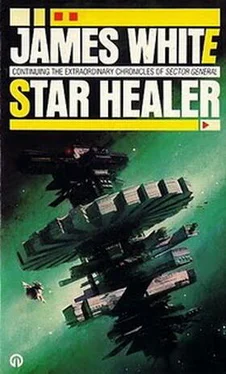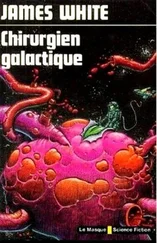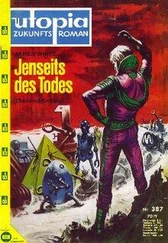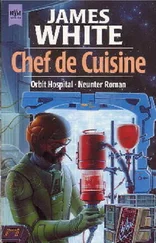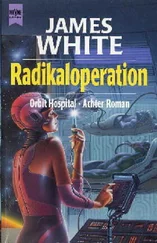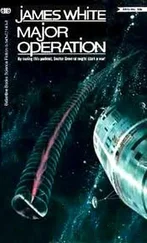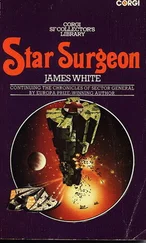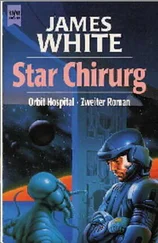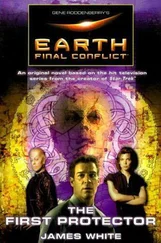“Cooperation is possible, and desirable,” the Gogleskan said finally, “but not close cooperation.”
Conway gave a relieved sigh. “The structure behind me contains a compartment designed for the confinement and study of local fauna under conditions of minimum physical restraint. For the protection of observers, the compartment is divided by an invisible but extremely hard wall. Would a close approach for purposes of physical examination be possible in those conditions?”
“Provided the strength of the invisible wall is demonstrated,” the Gogleskan said cautiously, “a close approach is possible.”
Wainright cleared his throat and said, “Sorry, Doctor. Until now there has been no need to use that room and I’ve been storing fuel cells in it. Give me twenty minutes to tidy up.”
While Khone and Conway walked slowly around to the rear of the building, he explained that the compartment had, as the healer could see, an external opening which allowed confined life-forms to return to their own environment quickly after release. No restraints whatsoever would be placed on Khone, Conway reassured the other, and it could break off any discussion or examination at will.
His intention was to try to find some explanation for the Cogleskan behavior by a close study of the physiology of the species, with particular emphasis on the cranial area, which displayed features completely new to Conway and which, for this reason, might suggest a line of investigation. But it was not his intention to cause physical or mental distress.
“Some discomfort is expected,” the FOKT said.
To further reassure Khone, Conway entered the compartment first, and while the Gogleskan watched from the external entrance, he demonstrated with his fists and feet the strength of the transparent wall. Indicating the ceiling, he briefly described the purpose of the two-way communicator and the projectors of the nonmaterial restraining and manipulation devices, which would be used only with Khone’s express permission. Then he went through the small door, outlined in white for visibility in that totally invisible wall, and left the FOKT to get used to the place.
Wainright had already moved the fuel cells from the observer’s half of the compartment, and had replaced them with a tri-di projector, recordings made the previous day as well as basic information tapes of the type used during other-species first contacts, and all of Conway’s medical equipment.
“I’ll monitor and record from the comm center next door,” Wainright said, pausing for a moment in the internal entrance. “Khone has already seen the information tapes, but I thought you might want to rerun the five-minute sequence on Sector General. If you need anything else, Doctor, let me know.”
They were left alone in the compartment, separated only by a thin, transparent wall and about three meters of distance, which was much too far.
Conway placed the palm of one hand against the transparent surface at waist level, and said, “Please approach as closely as possible and try to place a manipulatory appendage on the other side of the transparent wall occupied by mine. There is no urgency. The purpose is to accustom you to close proximity to me without actual physical contact.
He went on talking reassuringly as Khone came closer and, after several attempts and withdrawals, placed its cluster of digits opposite Conway’s hand. They were now separated by less than half an inch. Slowly he used his other hand to bring out his scanner and place that, too, against the wall on a level with the FOKT’s cranium. Without being asked, the Gogleskan pressed the side of its head section against the invisible surface.
“Excellent!” Conway said, refocusing his scanner. He went on. “While there are elements of the Gogleskan physiology which are completely strange to me, as a whole the life-form is similar to many warm-blooded oxygen-breathing species. The differences are centered in the cranial area, and it is this which requires examination and an explanation which might not have a purely physical basis.
“In short,” he went on, “we are examining a fairly normal lifeform that occasionally behaves abnormally. Now, if we accept that behavior patterns are established by environmental and evolutionary factors, we should begin by examining your past.”
He gave Khone a moment to think, then continued. “Lieutenant Wainright, who admits to being a fairly good amateur archeologist, tells me that your world has been remarkably stable since the time your presapient ancestors evolved. There have been no orbital changes, no major seismic disturbances, no ice ages or any marked alterations in the climatology. All of which indicates that your particular behavior pattern, the one which is presently hampering your progress as a culture, was evolved in response to a very early threat from natural enemies. What are, or were, these enemies?”
“We have no natural enemies,” Khone replied promptly. “There is nothing on Goglesk which threatens us except ourselves.”
Conway had trouble believing that. He moved his scanner to one of the areas where a sting lay partially hidden by cranial hair and then followed its connections to the poison sac while an enlarged picture of the process was projected onto the screen for Khone’s benefit. He said, “That is a potent natural weapon whether it was used for attack or defense, and it would not have evolved without reason. Are there any memories, any written or spoken history, any fossil remains of a life-form so ferocious that it caused such a deadly defense to evolve?”
The answer was again no, but Conway had to ask the help of Wainright to explain fossils to the Gogleskan. It transpired that Khone had seen fossil remains from time to time but had not realized what they were or considered them of any importance. As a science archeology was unknown to its people. But now that Khone knew what the odd-shaped marks and objects in certain rocks signified, it seemed likely that the healer would father a new science.
“Have you experienced any dreams or nightmares about such a beast?” Conway asked, without looking up from his scanner.
“Only the phantasms of childhood,” Khone said quickly, giving Conway the impression that it wanted to change the subject. “They rarely trouble adult minds.”
“But when you do dream about them,” Conway persisted, “is it possible to remember and descril — e this creature or creatures?”
Almost a full minute passed before the Gogleskan replied, and during that time Conway’s scanner showed a perceptible bunching of the muscles surrounding the poison sac and at the base of the stings. Plainly he was moving into a very sensitive area. This answer, he thought, was going to be an important one.
But when it came the answer was disappointing, and seemed to invite only more questions.
“It is not a creature with a definite physical form,” the FOKT said. “In the dreams there is a feeling of great danger, a formless threat from a fast-moving, ferocious entity which bites and tears and engulfs. It is a phantasm which frightens the young, and the thought of it distresses adults. The young may give way to their fears and join together for mutual comfort, because they lack the physical strength to inflict major damage to their surroundings. But adults must avoid such mental bad habits and remain mentally and physically apart.”
Baffled, Conway said, “Are you telling me that young Gogleskans may link together at will, but not the adults?”
“It is difficult to stop them doing so,” the FOKT replied. “But it is discouraged lest a habit develops which would be too difficult to break in adulthood. And while I realize that you are anxious to study the joining process without subjecting our artifacts to damage, to closely observe a joining between children without causing mental distress in the parents concerned, followed by an involuntary adult joining, would be impossible.”
Читать дальше
